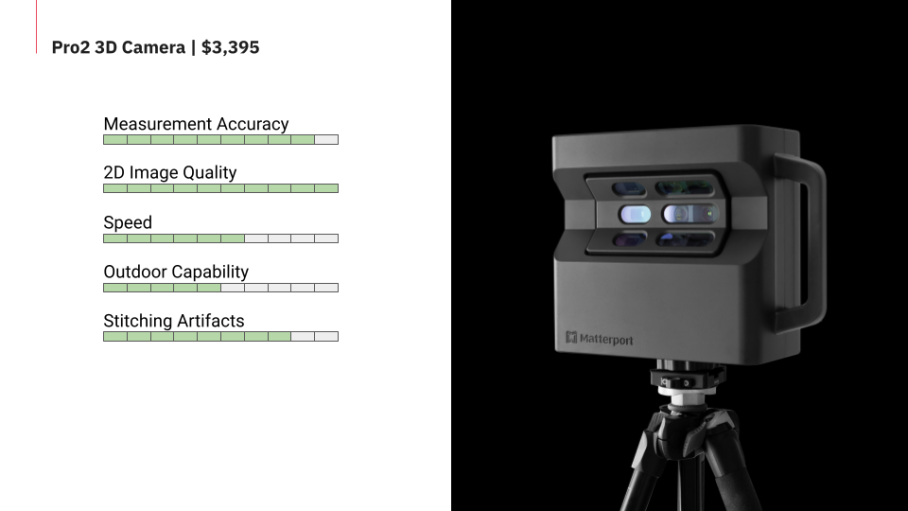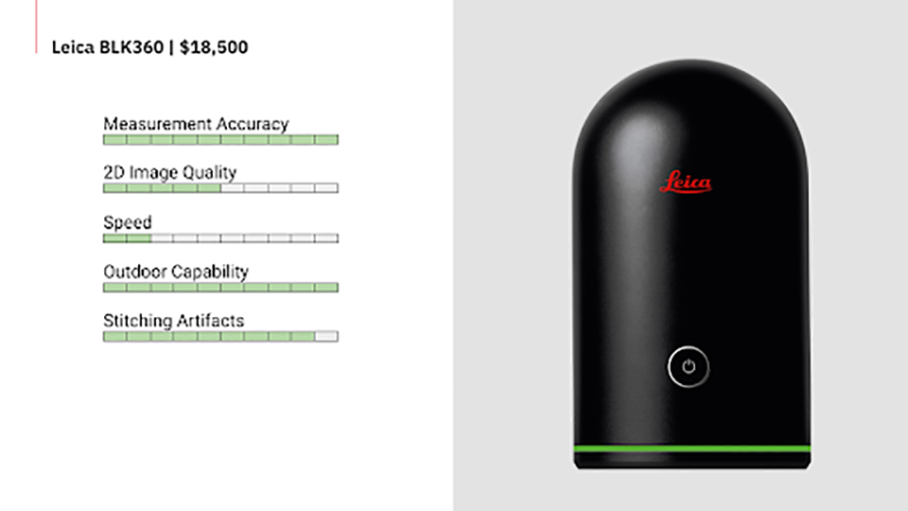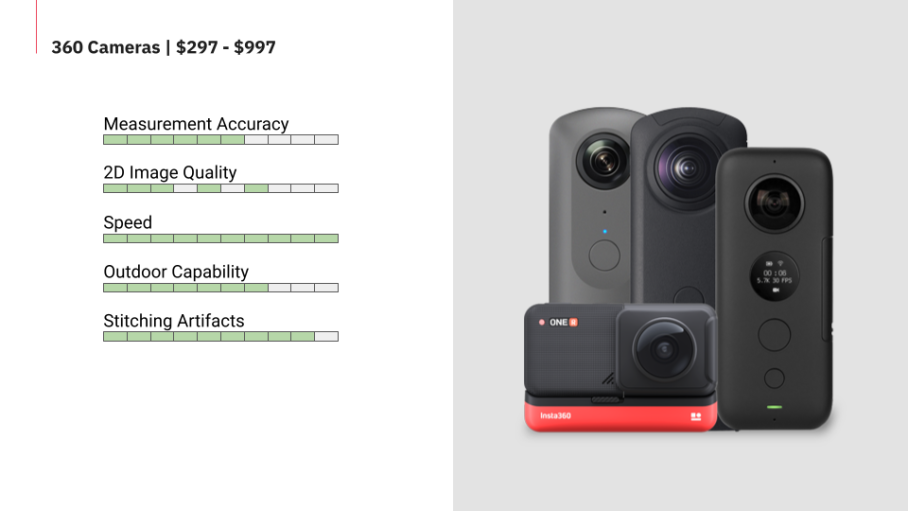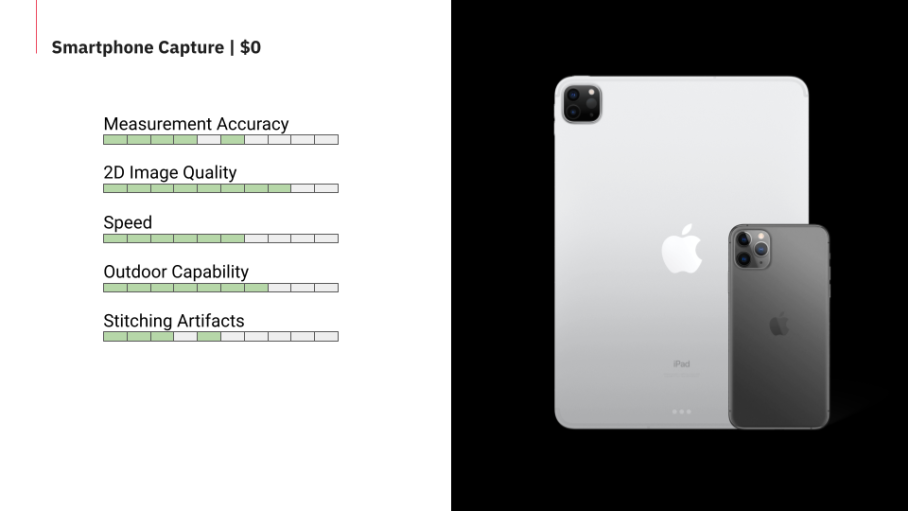How to Select The Right Camera for the Job
The right tool isn’t always going to be the one with the highest specs or newest features; it’s about the context in which the digital twin will be used and experienced.
As I was working on content for an upcoming webinar, I was revisiting the image quality of each camera due to our recent support of additional Ricoh and Insta360 360 cameras.
There are several metrics that should be used to figure out which camera will make the most sense for your use case. That being said, image quality is one of the hardest to define. It’s more subjective and really can only be defined by the viewer for themselves.
Coming from a photography background, I know a lot of photographers are going to have something to say about that. There are several review sites that do a great job of breaking down image quality scientifically by analyzing resolution test images and color samples. However, a viewer’s personal experience with an image and the purpose of the project are more meaningful considerations when selecting your camera.
Image quality and the law of diminishing returns
When shopping with my dad for a new set of speakers, I remember getting very excited by the specs of some high-end manufacturers while being simultaneously overwhelmed by their prices. Not being an audiophile with a well-trained ear for sound, my dad asked, “If I can’t hear the difference, what am I paying for?” The concept is no different with image quality.
Having worked with images for decades, photographers have a very well-trained eye. They see things others won’t notice, such as chromatic aberrations, subtle differences in noise, and color grading discrepancies. Although they aren’t always obvious, when these visual inconsistencies become too extreme even an untrained viewer will begin to notice them. However, like most things, image quality adheres to the law of diminishing returns.
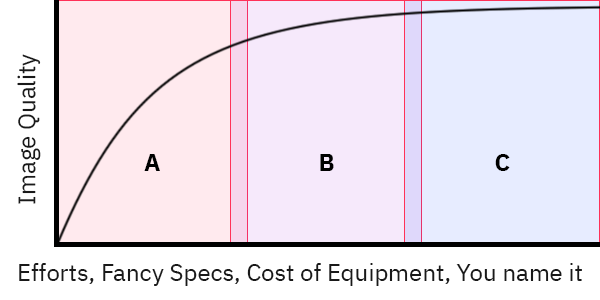
The law of diminishing returns states that gradually, as you increase a factor of production, you’ll begin to see smaller increases in output. I put this graph together to demonstrate the concept when applied to image quality.
Section A represents most people who are not in the photography and imaging business. Here, radical improvements in image quality are noticeable because they’re easier to spot. In the next category, Section B, differences in image quality require a more well-trained eye to see, providing less overall value to the digital twin. Finally, in Section C, you’ll find that the most expensive equipment will result in differences that only sophisticated machines like a colorimeter would see.
While there will be some overlap between these categories, the outcome is clear: Investing in increasingly expensive cameras won’t necessarily deliver more meaningful results.
For example, if your digital twin isn’t being used in a way in which high-resolution image quality is critical - such as architecture, construction, engineering, facilities management or property restoration - or if you and your client can’t notice a difference yourselves, using a camera with higher pixel specifications isn’t the best option. Instead, consider prioritizing a faster camera that offers more efficiency or perhaps a more accurate camera that emphasizes measurement accuracy.
In other words, the right camera for the job isn’t always going to be the one with the highest specs or newest features. A Matterport digital twin is a visual asset, however, the way users interact with it is very different from a photograph. That’s why image quality can’t be the only metric used to compare different cameras.
Putting each camera to the test
To help you better decide which camera will best suit your image quality needs, I’ve captured the same space, from the same angles, using every camera we currently support — except for the Leica BLK360. Why not use the BLK? The example is an indoor residential real estate space, and the BLK just wouldn’t be appropriate, unless you wanted to integrate it for the outdoor scans. I’ll provide comparisons of other use cases that will include the BLK where it is more appropriate. Here is each example for your consideration:








To help you make the right decision when it comes to your camera and the job at hand, I’ve included some slides below to illustrate the differences across five key criteria: measurement accuracy, 2D image quality, speed, outdoor capability, and stitching artifacts. To get a better understanding of how I came up with the scale for each, check out the original webinar here.
You’ll notice that I specify 2D image quality and that’s because I want to isolate the pano’s image quality from other quality attributes such as stitching artifacts. Because of how subjective image quality is compared to the other considerations, I recommend opening up the demo models above to judge for yourself.
Remember, you'll want to consider all of these attributes in choosing the right tool for the right job, not just image quality.
